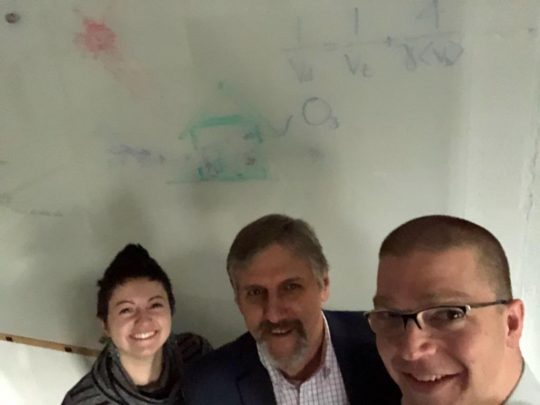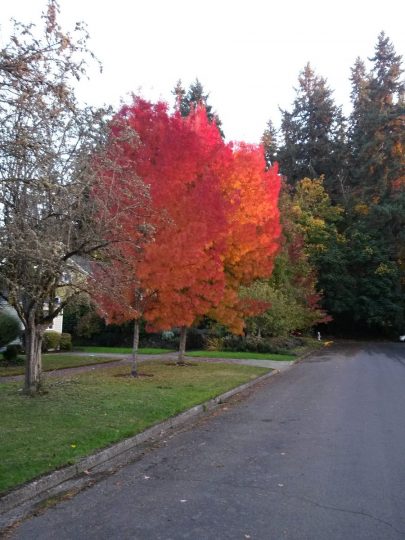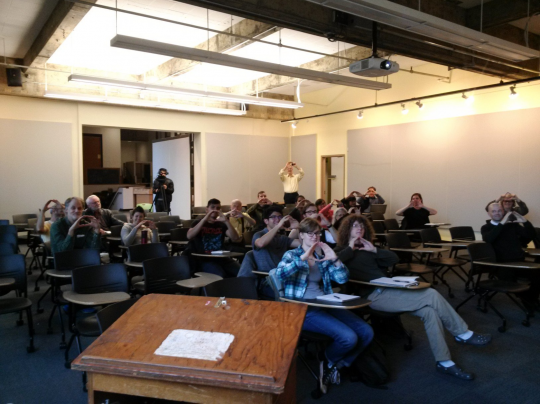Written by Dr. Rich Corsi, edited by Sue Ishaq and Jeff Kline.
Several months ago, I connected with Dr. Kevin van Den Wymelenberg at the University of Oregon about the interaction between indoor microbiology and indoor chemistry, and several other common interests. We also discussed the possibility of having me visit the University of Oregon during my fall semester leave from the University of Texas at Austin. I visited the University of Oregon for 12 days in October, and I am so glad that I did.
Kevin walks in fairly large circles while wearing a lot of hats at the University of Oregon. He is the Director of the Energy Studies in Buildings Laboratory (ESBL), and Co-director of the Biology of the Built Environment (BioBE) center, and this summer and fall has been serving as the interim Head of the Department of Architecture. The BioBE center is a unique initiative funded by the Alfred P. Sloan Foundation’s Microbiology of the Built Environment (MoBE) program. Prior to my visit I was already aware of, and impressed by, how BioBE has effectively built a community of scholars that bridge two disparate disciplines; architecture and microbiology, in a transdisciplinary manner. That impression was underscored and reinforced during my visit.
I delivered two seminars during my visit, both in the School of Architecture and both entitled Living in a Material World – How the Surfaces that Surround You Affect What You Breathe. One of these was delivered on the main campus of the University of Oregon in Eugene, and the other to the School of Architecture’s program in Portland. The latter also contains the ESBL’s climate chamber facility, which is a highly-controlled and impressive instrument for studying indoor environmental quality. The seminars were well attended, and the questions and discussion which followed each were both insightful and creative.
My talk in Portland went well tonight. Thanks, @Wymelenberg for the intro & invite, attendees for gr8 questions, & @etgall for visiting. pic.twitter.com/1J5G8kY7eP
— Dr. Richard Corsi (@CorsIAQ) October 25, 2017
I also interacted with numerous individuals during my visit, most of whom are dedicated to improvements in building energy consumption, as well as expanding knowledge related to indoor air quality and particularly microbiomes of buildings. We discussed their ongoing projects, including one involving the effects of lighting on bacteria in residential dust and funded by the Alfred P. Sloan Foundation (Link: ) and another on home weatherization funded by the U.S. EPA. This led to a broader discussion about future research with BioBE’s Sue Ishaq and ESBL’s Jeff Kline, about the impacts that home weatherization and operation, as well as human behavior can have on indoor chemistry, for example, the use of air fresheners or cooking, which release highly reactive unsaturated organic gases and particles to indoor environments. We even wondered whether indoor chemistry would impact microbial communities, and our discussions sparked a few pilot projects between myself, BioBE/ESBL, and one of my colleagues at the University of Texas at Austin.
There were many other great interactions during my visit to the University of Oregon, including one with Isabel Rivera, a Ph.D. student who is doing important work on indoor air quality and thermal comfort in elementary school classrooms in Chile. I conveyed to Isabel some of the findings from my own studies on indoor air quality in schools in Texas, as well as ideas for low-cost measurements of pollutants emitted from unvented space heaters in Chilean schools.
Not all of the time during my visit was for work. Eugene is a great city for walking. The weather was fantastic and fall colors were in the height of their flare. I walked everywhere. I walked and walked and walked, then rested a bit and walked some more. A highlight was visiting the historic Mims home near downtown Eugene.
Another highlight was attending an Oregon Ducks football game (they beat the Utes). My ex-PhD student, Elliott Gall, now an assistant professor at Portland State University, came down to Eugene for the game. Great fun – and I have learned to appreciate both the quack attack and the hand gesture “O” (for University of Oregon). All in all, I was impressed by everything Eugene, at the center of which was the University of Oregon and the people at ESBL and BioBE.


